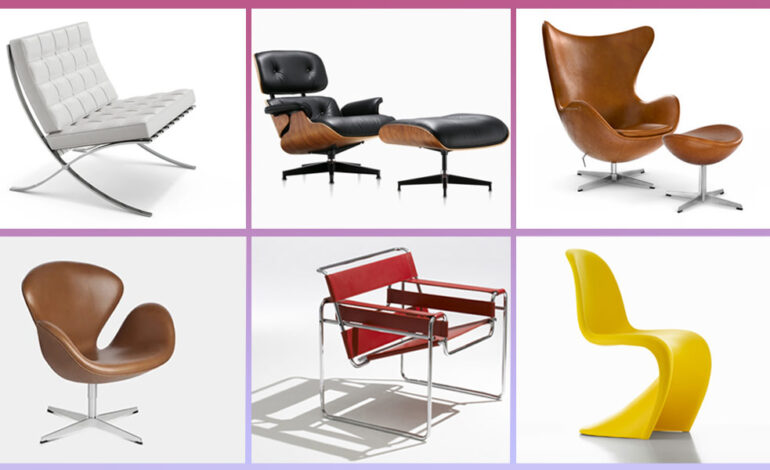
Russian furniture designers have faced many challenges over the years, but they have also seen periods of great success. Two periods, in particular, are worth mentioning for their profound importance and influence on Russian art and design; The 1920s and mid-1950s.
In the 1920s, Russian artists challenged and changed the way we thought about both art and their role as artists, painting themselves instead as designers responsible for creating material things for a new society. They marked the end of traditional art and the birth of “new art.” Today, we know these designers as “constructivists.”
Practicality over beauty
As the term may suggest, constructivists were focused on fulfilling the practical and industrial needs of the time. Simply put, they marked “the death” of emotional art and a return to the fundamentals of design. This often left very little room for aesthetics. In fact, they were usually disregarded altogether, along with comfort. What they did focus on, in contrast, was how people lived outside of work hours, and how they spent their leisure time.
A great example of this is the Workers’ Club Chess Chairs and Table by Alexander Rodchenko, designed in 1925 for the Soviet Pavillion. Rodchenko wanted to encourage society to spend their leisure time relaxing and educating themselves actively rather than passively, through collective activities such as playing chess and reading books.
The Workers’ Club set consisted of two armchairs and a table, all of which could be pierced together or used separately. The table could swivel to allow people to get in and out of their chairs for a chess game, whilst also allowing it to be used as a flat workspace or at an angle to read. The table itself had colour blocks for the chess pieces to be placed upon.
In the years following the industrial revolution in Russia, people were more optimistic about their living standards and wanted their living spaces to reflect that. It was also a period where work was going into creating new, affordable housing options where communal living was encouraged. The furniture, therefore, had to reflect the new housing designs and style.
Answering society’s problems
Constructivists, therefore, wanted to improve society’s overall standard of living by answering societal problems. For example, one design solution for those living in cramped living conditions was to create multi-functional furniture pieces. In addition, the focus was to minimise the unnecessary movements within the home and to respond to the new hygiene, weight, material and cost requirements of the time.
Unfortunately, Russian design has always been at the mercy of Russian politics. As a result, the constructionist design style and “Avante-Garde way of thinking was banned in the early 1930s until the political situation changed once again in the mid-1950s.
The Tatlin Chair by Vladimir Yevgrafovich Tatlin, 1927
Vladimir Yevgrafovich Tatlin was a co-founder of the constructionist movement, alongside Alexander Rodchenko and a few others. One of his greatest designs was the Swing Chair, which was first created as a prototype in 1927 and later went into production in the 1950s. He made use of minimal material to save costs, by creating a simple, tubular steel design. The wooden bucket seat was upholstered in cow leather to ensure its durability.
Late production was common during the 1920s, as the country was still in a difficult financial space following the end of WWI in 1918. Another popular chair designer of the time was El Lissitzky, who was also involved in the constructionist movement. His D61 and D62 Chairs greatly influenced design on an international level, even though the D62 Chair only came into production in 1970, 32 years after its initial design.
Key features of popular Russian chairs now and in the past
Furniture was often created using raw materials like wood, iron, glass or steel, and mass-produced in factories which only added to their “hardness.” They were often recognised by their angular, geometric shapes. These shapes allowed them to slip and slide into one another to save space, and to create multiple uses for each piece. These key features added to the success Soviet design saw during this period.
Of course, the period between 1919 and 1933 also saw the rise of the Bauhaus movement, which greatly inspired designers to play and experiment with shapes. Since the end of Soviet rule, Russian furniture designers have shifted their design style to harness comfort, practicality, durability and aesthetics, whilst always ensuring that they look back to history for their inspiration.
These days, organic shapes have become increasingly popular within Russian design, especially in the work of young and upcoming artists. A good example is The PROUN chair by Katia Tolstykh, created in 2018.








